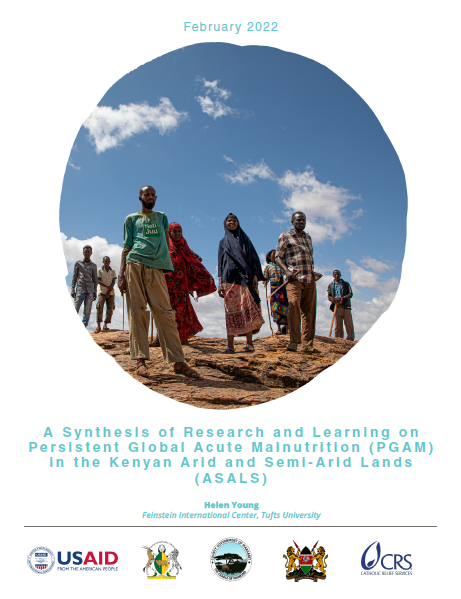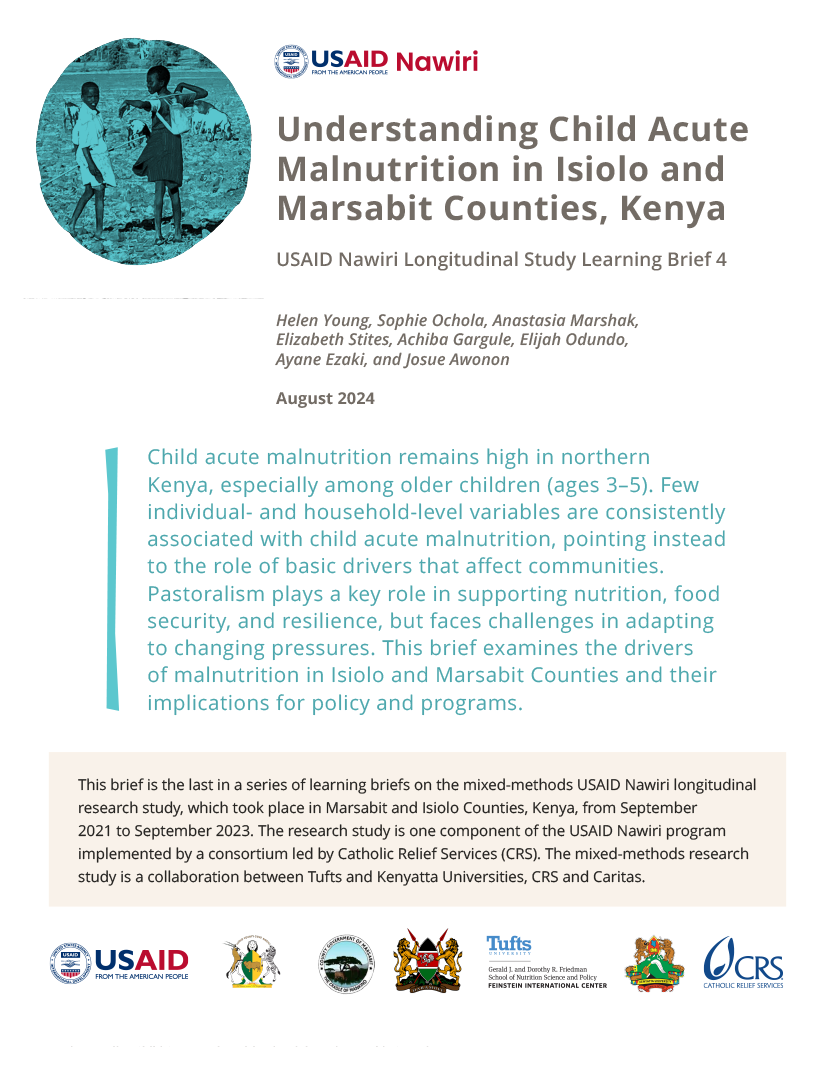High rates of child global acute malnutrition (GAM) are a continuing problem in the Kenyan arid and semi-arid lands (ASALs), despite ongoing humanitarian and development efforts. The Nawiri project aims to sustainably reduce child acute malnutrition in vulnerable communities. By the end of of the second year of the project, the partners had completed more than 20 studies.
This report synthesizes the Nawiri research findings up to the end of September 2021 in relation to the original research agenda, which was based on the conceptual framework for addressing acute malnutrition in Africa’s drylands. It presents key findings about acute malnutrition and the immediate, underlying, and basic drivers of it; implications for Nawiri; evidence gaps; and lessons for operationalizing the framework and driving systemic change. Summaries of each report are included in the annex.







